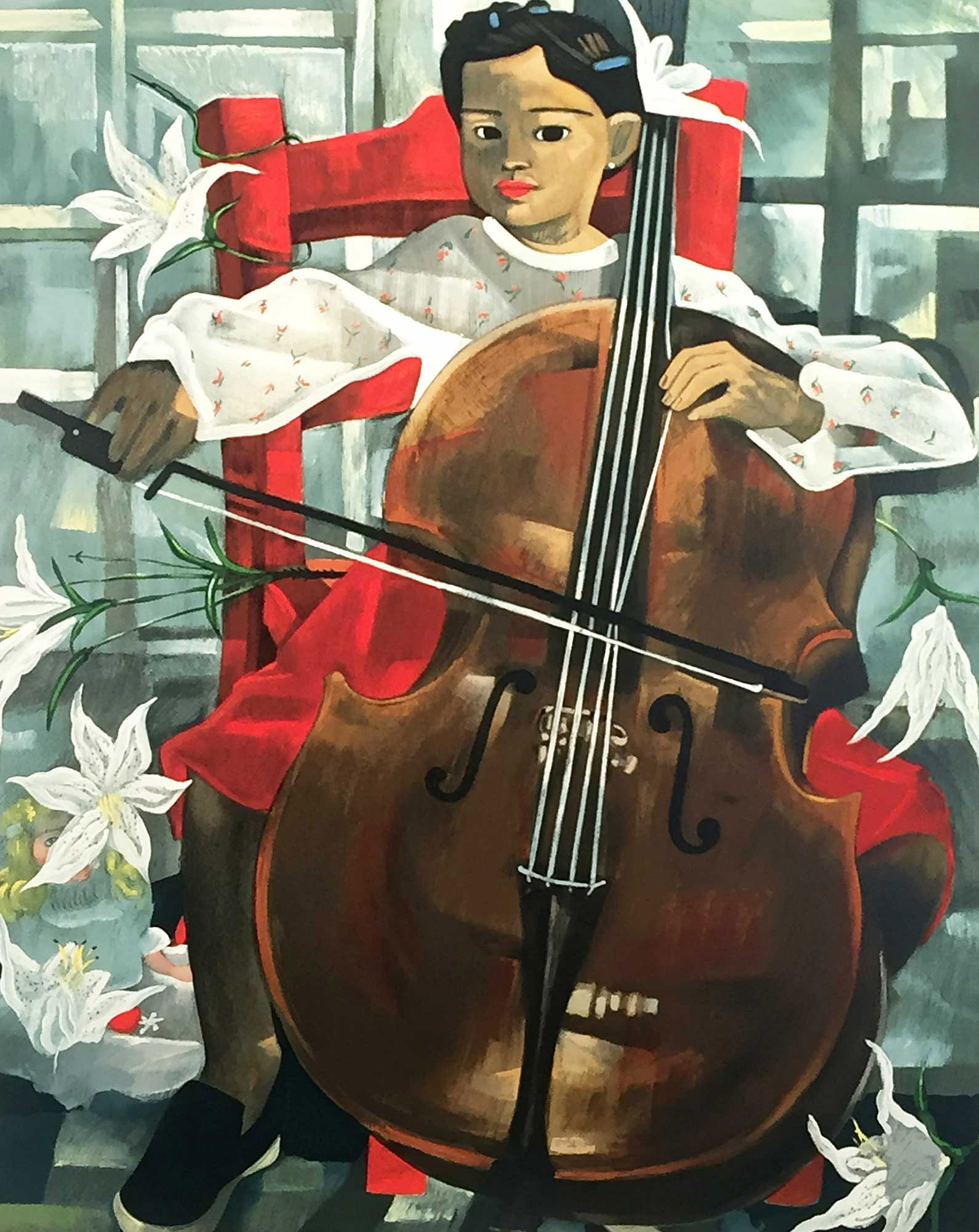
Sonya Fe
I Don't Want to be Perfect
Lithograph, 20th Century.
Edition No. 283/285.
Image: 23 x 30
Paper: 29 x 35
Excellent condition.
Inventory Number: SF1002
Pencil signed and numbered by artist.
Girl seated in red chair, playing the cello.
Call for price: 201-871-3577
Sonya Fe’s gift as an artist became apparent early in life. One could say that she was born with a paintbrush in each hand and the ability to draw with either hand. The cement floor of her home became her first drawing surface. Each day Sonya created a new drawing in chalk or crayon for her family’s amusement and every night her masterpiece would be mopped clean by her mother. Her father took her on outings where she drew what attracted her interests: trees, animals, and people.
At the age of 13, Sonya won her first art scholarship to attend a summer program at Otis Art Institute in Los Angeles. She received her BA degree in art at the Art Center College of Design in Pasadena, California. She claims that Art Center taught her technique, how to mix colors and how to work as an artist, but it did not teach her how to paint. Instead, Sonya learned to paint simply by experimenting with the paint. She was not concerned with the final product, rather her mission was to learn the tools of the craft and how to convey her thoughts and feelings in each painting.
After becoming an established artist, Sonya published children’s stories and a drawing book-You Can Draw Too-for helping students to illustrate their own storybooks. She is the co-founder of Publishing Children’s Stories, an intervention program that integrates literacy, art and technology in elementary school education. In 1998, Sonya Fe received the National Artist Award from the California State Senate.
Sonya Fe’s art has enjoyed a considerable amount of popularity in Hispanic-American Movement. Fe’s work reflects social and cultural issues with themes centering on child abuse/neglect and the woman place in society. Swans and cats are common animals included in her work. Fe admits that “the figures themselves are not anatomically correct-some have little definition. However, the faces are very defined, making the face the center of attention. My main concern is clearly with the relationships among these women’s varying physical presence and at the same time bringing into equilibrium the active lines, and the colors that define them.”

